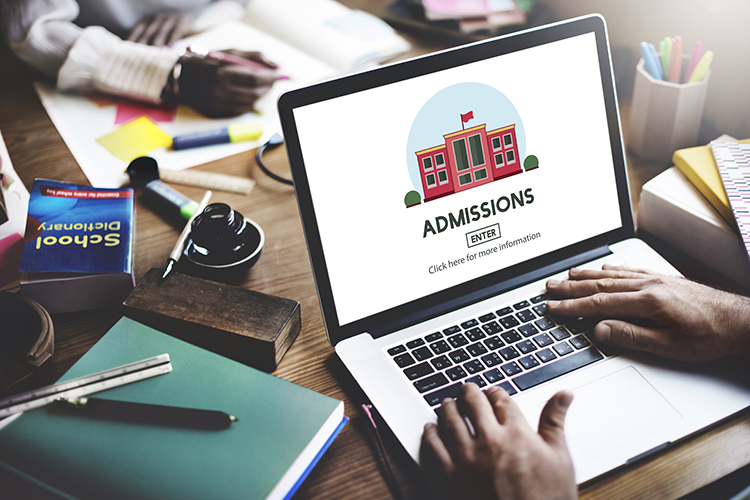Despite Department of Ed guidance, universities may be cautious with outreach offerings

“I don’t see these pipeline programs as being among the most pressing or sexy targets. Unless the people participating are getting a real advantage, like a plus in admissions,” says Audrey Anderson, a Tennessee lawyer who represents colleges and universities. Images from Shutterstock.
Following the recent U.S. Supreme Court opinion that found race-conscious college admissions to be unconstitutional, some universities worry their minority outreach programs may be in jeopardy.
They’re probably not, says David Bernstein, a professor at the George Mason University Antonin Scalia Law School. For Students for Fair Admissions Inc. v. President and Fellows of Harvard College, he had an amicus brief filed on his behalf, supporting the petitioners. It argued that Harvard’s racial categories were “arbitrary and irrational,” as well as flawed. Justice Neil Gorsuch, joined by Justice Clarence Thomas, cited the brief in a concurrence.
“Saying we want to help underrepresented groups—in general, no one is going to say that’s a problem,” Bernstein says about diversity outreach offerings, which are usually referred to as pathway or pipeline programs.
One way to structure such an offering, he adds, would be stating that the program wants people from underrepresented groups, who have “a commitment to diversity in education.”
“People will understand. This gets you 80 to 90% of what you want,” says Bernstein, adding that while he suspects universities will have policies like what he described, he is not endorsing them.
 Related article from ABAJournal.com: “Companies must end racial preferences or face accountability ‘sooner rather than later,’ 13 state AGs say”
Related article from ABAJournal.com: “Companies must end racial preferences or face accountability ‘sooner rather than later,’ 13 state AGs say”
Also, universities have recent guidance from the U.S. Department of Education delivered in an August 14 Dear Colleague letter and an overview with questions and answers.The U.S. Department of Justice’s Civil Rights Division co-signed the communication.
Universities can continue to use targeted outreach, recruitment and pathway programs to promote and maintain diverse student applicant pools, the Q&A portion states. It also clarifies that race, and other factors, can be considered when doing outreach and recruitment. However, admission to pathway programs can’t be based on someone’s race, according to the guidance.
“I would caution that it’s just guidance. It’s not binding if a court case was ever litigated,” says Jonathan Franklin, a Norton Rose Fulbright partner. He submitted an amicus brief in Students for Fair Admissions for the Association of American Medical Colleges and other medical education organizations supporting the respondents.
The head of his law firm’s United States appellate practice, Franklin adds that he is speaking on behalf of himself, not his clients or law firm.
He also says that if a pathway program supports diversity in education and admits people of all races, “a nonminority applicant would be hard pressed to make an argument that he or she was disadvantaged.”
Even so, it’s possible some groups may still challenge pathway programs promoting diversity, according to Audrey Anderson, a Tennessee lawyer who represents colleges and universities.
But she also wonders if the programs will draw as much attention as admissions policies did.
“I don’t see these pipeline programs as being among the most pressing or sexy targets. Unless the people participating are getting a real advantage, like a plus in admissions,” says Anderson, a former vice chancellor, general counsel and university secretary for Vanderbilt University, who is now a counsel with Bass, Berry & Sims.
She suspects some universities will pull back on the programs out of fear but predicts that others won’t.
“There aren’t many schools that really want to be the test case, but there are definitely some schools that will say, ‘This is important to us and we are doing the right thing, so if we are sued, we are comfortable defending that lawsuit,’” Anderson says.
Others fear pullback will come from applicants. Kevin Johnson, dean of the University of California Davis School of Law, says there was a decrease in minority applicants immediately following a state ballot initiative passed in 1996, which prohibits government preferences based on race or gender. Since then, the law school has had a race-neutral pathway program, focused on first-generation college students and those from economically disadvantaged backgrounds.
“Some were thinking, ‘The schools don’t want me; I don’t want to waste my time applying.’ One of the things we’ve focused on over the years is trying to encourage people to apply and make services available so you can apply,” Johnson says.
The law school’s King Hall Outreach Program, established in 2001, helps college juniors and seniors from underrepresented communities with the law school admissions’ process. That includes pre-law advising and weekend sessions, with topics including writing, analytical and logical reasoning skills and study tips for the LSAT.
In the past several years, between 40% to 60% of the participants are Mexican American, 10% are Latino and 30% are “a variety of other students, including people who are mixed race,” Johnson says. He adds that approximately 50% of California’s central valley, where Davis is located, is Latino, as are more than half of California’s high school graduates.
According to the law school’s 509 Report for 2022, almost 49% of the students identify as people of color.
“I’m quite confident we can keep applications up, and we can get enough good applicants. There’s just the chilling effect of a decision like this; it has so many people worked up,” Johnson says.
See also:
“SCOTUS strikes down race-conscious admissions programs at Harvard, University of North Carolina”
“In new admissions cycle, law schools are trying to avoid ‘litigation bait’ with race-neutral plans”



